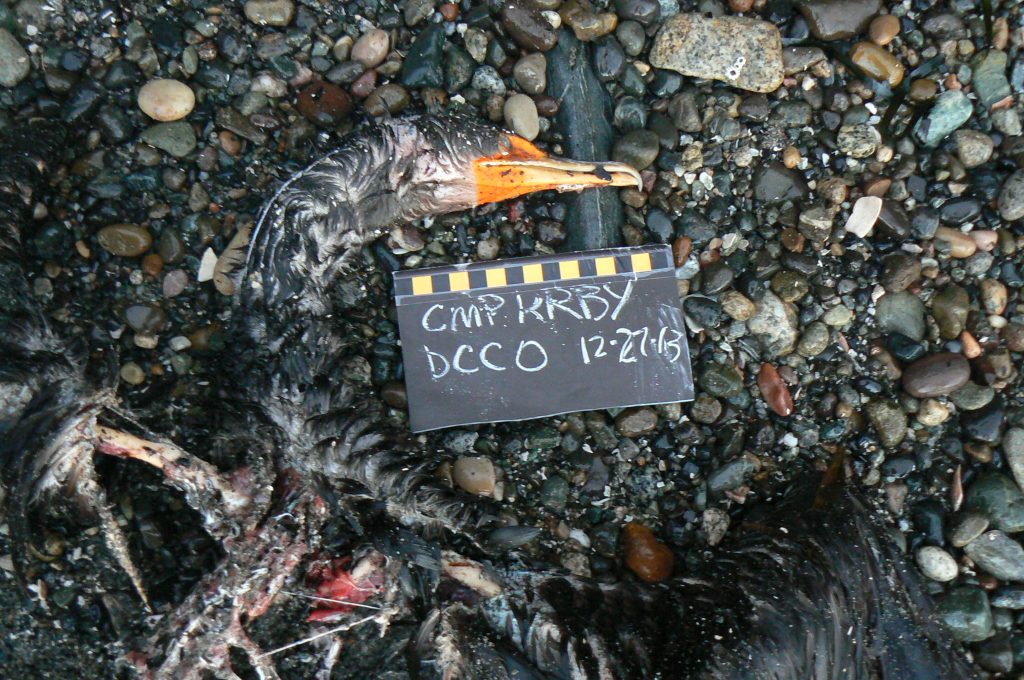We’re having a great winter here at the COASST office and have enjoyed hearing about your recent surveys and interesting finds! Hope that you’re all enjoying yourselves on the beach and staying warm. If you need any supplies, just let us know.
Here’s a look at what’s washed in recently:

Japanese water bottle found by Tasha on a December survey of Spring Creek Beach in Seward, Alaska. Native goose (gooseneck) barnacles (Lepas anatifera) are attached to the cap. Adult goose barnacles release eggs, which hatch into free-swimming larvae that settle onto all types of substrate. For our state and federal fish and wildlife partners, photos of fouled items showcase the potential for marine debris to transport non-native invertebrates into the COASST range.

Nancy and Roz found Camp Kirby’s sixth bird ever in December, a Double-crested Cormorant. Using the foot (not pictured here) we get to 4 toes: all webbed – stop – Pouchbills. On the Pouchbill family page, we’re asked to separate by bill (West Coast guide) or wing chord (Alaska guide). Wing is 33cm, bill is 59mm, which puts us squarely in cormorants – there’s only one with a stout yellow-orange bill and throat pouch – the DCCO!

We chose Steven and Malinda’s photo from Oregon Mile 285 for a new perspective of a common species. What part of the bird am I looking at here?! We can help with that: right wing (tagged), left wing, white body feathers. Now it’s time to try out your skills! Using the Alaska guide: dark upperwing, with trailing white secondaries (did you spot them? they’re in the center of the photo), with white underwing linings – murres that’s correct (wing chord = 20cm). Using the West Coast Wing Key: dark upperwing, white stripe on trailing edge of secondaries (subtle on worn wing) – American Coot or Common Murre (COMU has the white underwing lining). West Coast Wing Table: wing chord = 20cm, dark upperwing, with white linings – Common Murre for sure.

Had to dig through a few murres and fulmars to find this one from Sara and Peter, Ma-le’l Mid, Humboldt, California. Check out the foot, upper left. Tarsus width is greater than 12mm across – Loon. With measurements: 55mm bill, 30cm wing, 70cm tarsus, it’s too small for a Common Loon – dark back (no spotting) and straight bill lead us to Pacific Loon (LO2-LO3 in Beached Birds).
